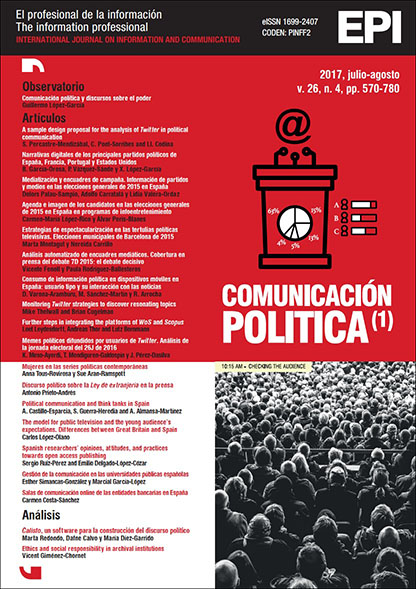Further steps in integrating the platforms of WoS and Scopus: Historiography with HistCiteâ„¢ and main-path analysis
DOI:
https://doi.org/10.3145/epi.2017.jul.10Keywords:
Scopus, HistCiteâ„¢, CRExplorer, Historiography, Eugene Garfield, Main path.Abstract
The program HistCiteâ„¢ enables an analyst to identify significant works on a given topic using the citation links between them diachronically. However, using Scopus data for drawing historiograms with HistCiteâ„¢ has hitherto been a problem. In the new version of the program CRExplorer, one can translate citation data from Scopus to WoS formats (or vice versa) and then import the data into HistCiteâ„¢. In this brief communication, we demonstrate these options using the papers of Eugene Garfield (1925-2017) in Scopus for main-path analysis. The two historiograms are considerably different: unlike the WoS set, the networked connections between the time lines are sparse in the representation of the Scopus data; the secondary documents (e.g., editorials in Current Contents) not processed in Scopus, but included in WoS enrich the representation. Furthermore, HistCiteâ„¢ has an option to export the citation network as a Pajek file that can be read by most network analysis and visualization programs. Garfield´s texts are centered by him as a personality and entrepreneur in different domains more than intellectually, although there are a number of recurring themes. Our own main paths are shaped along a line along which components indicate longer-term projects.
Downloads
Downloads
Published
How to Cite
Issue
Section
License
Dissemination conditions of the articles once they are published
Authors can freely disseminate their articles on websites, social networks and repositories
However, the following conditions must be respected:
- Only the editorial version should be made public. Please do not publish preprints, postprints or proofs.
- Along with this copy, a specific mention of the publication in which the text has appeared must be included, also adding a clickable link to the URL: http://www.profesionaldelainformacion.com
- Only the final editorial version should be made public. Please do not publish preprints, postprints or proofs.
- Along with that copy, a specific mention of the publication in which the text has appeared must be included, also adding a clickable link to the URL: http://revista.profesionaldelainformacion.com
Profesional de la información journal offers the articles in open access with a Creative Commons BY license.




